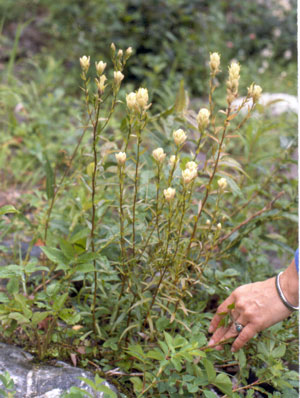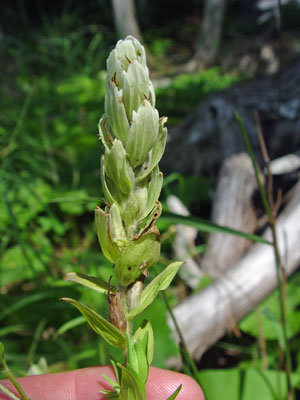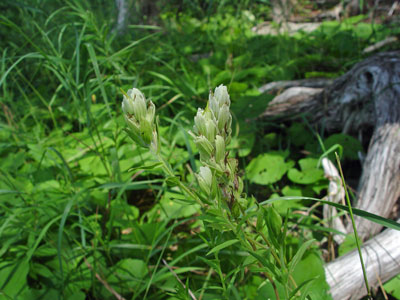DACF Home → Bureaus & Programs → Maine Natural Areas Program → Communities, Plants, and Animals → Rare Plants → Castilleja septentrionalis

Castilleja septentrionalis Lindl.
Northern Painted Cup
- State Rank: S3
- Global Rank: G5
- State Status: Special Concern
Habitat: Rocky or gravelly (often calcareous) shores. [Non-tidal rivershore (non-forested, seasonally wet), Alpine or subalpine (non-forested, upland)]
Range: Labrador south to Maine west to Michigan and Utah, north to Alberta.
Aids to Identification: Northern painted cup is a perennial herb of moist, calcareous or peaty soils. It is characterized by growing up to 50 cm tall with alternate, simple, sessile (i.e. lacking a pedicel), linear-lanceolate leaves. The flowering stems are hairy with white-purple tinged bracts. The white with purple tinge flower is bi-lipped with 5 fused petals. Flowers are borne at the end of the stems.

Ecological characteristics: Found in cool, moist habitats including on Mount Katahdin and the St. John River. Unclear why populations sizes in New England are small.
Phenology: Flowering June-July.
Family: Orobanchaceae (formerly Scrophulariaceae).
Synonyms: Castilleja pallida (L.) Spreng. ssp. septentrionalis (Lindl.) Scoggan; Castilleja pallida (L.) Spreng. var. septentrionalis (Lindl.) Gray.
Known Distribution in Maine: This rare plant has been documented from a total of 14 towns in the following counties: Aroostook, Piscataquis.

Reason(s) for rarity: At southern edge of range, calcareous habitat is scarce in Maine.
Conservation considerations: The populations in Maine are small, but persisting at known locations.